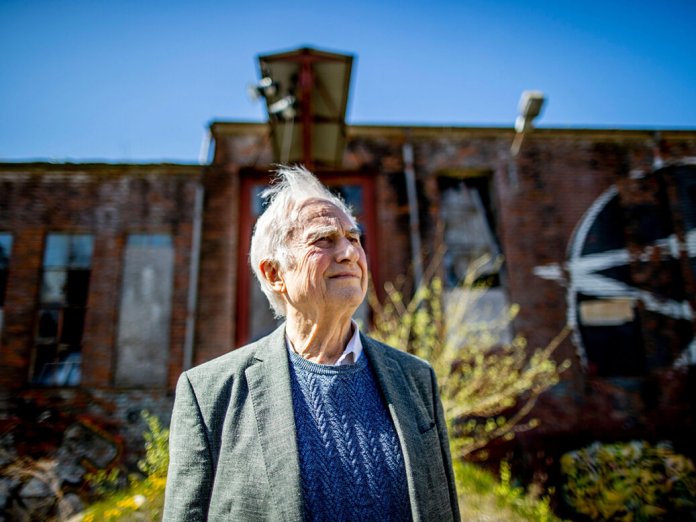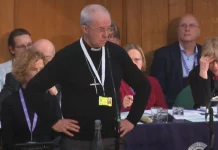
We speak, once again, of disorder in the cities of the empire, and war on her frontiers; new gods in the public places; barbarians on the roads. The historian Reinhart Koselleck one said all history since 1770 has been an account of crisis, and the form of that crisis, more often than not, has been the fall of Rome. “I have witnessed,” the sceptic Edward Gibbon wrote, at the conclusion of The History of the Decline and Fall of the Roman Empire, “the triumph of religion and barbarism”: his lament for the end of classical civilisation instigated modern secularism, and burdened it with the terror of collapse.
The “New Atheists” of the early-21st century were, in this regard, not new at all. Sam Harris, Christopher Hitchens, Ayaan Hirsi Ali – above all, Richard Dawkins – evangelised for an atheism they saw as simultaneously irrefutable and in danger of imminent eclipse. Their struggle was not just for truth, but for survival. From the pages of Gibbon, an “age of darkness and confusion” beckoned. Science was a flame flickering in the shadows of history; they fought against the dying of the light. That these fighters should turn renegade – Hirsi’s apostasy from unbelief, Dawkins’s refashioning as a cultural Christian – seems, on the face of it, inexplicable.
One way to make sense of the contortions of modern sceptics is to look again at one of their forefathers. Gibbon’s antagonism towards “enthusiasm”, “fanaticism” and “superstition”, so evident in Decline and Fall, was derived from the moral theory of the Scottish sceptic David Hume. Hume’s rejection of metaphysics arrived at a rationalist, near-agnostic deism in religion; in ethics, a system of morality founded on temperament. Errors in the first were attributed to failures in the second: Catholic “superstition” was symptomatic of melancholy; low church “enthusiasm”, an overactive imagination. Gibbon followed Hume in assuming reason dictated similar moral and political conclusions to his own. Discovering how rarely this was the case informed his gloomy view of human nature. Looking back as he entered the era of Enlightenment, he saw the dark age following on.
Through the 17 years it took to complete Decline and Fall, between 1771 to 1789, Gibbon’s animus towards Christianity faded. The same passages that mourned the “triumph of barbarism and religion” paid grudging tribute to the moderating role played by the hierarchy of the Church. His loathing of asceticism – epitomised in monasticism, in which religion and barbarism were one and the same – remained. But he recognised that the disruptive potential latent in Christianity could be restrained by judicious authorities.
For Gibbon, this was not a merely historical question. A footnote to one passage in Decline and Fall, decrying the enthusiasts of antiquity, directs public authorities to the work of the dissenter Joseph Priestley. For both men, theological and political radicalism were conjoined. For Gibbon, temperament was too: no man of “sound understanding and historical experience”, he wrote, could adopt “the wild & mischievous system of Democracy”. When the French Revolution broke out in 1789, he described the revolutionaries with the same words with which he censured the destroyers of Rome: “fanatics”, “savages”, “the New Barbarians”.
In 1981, the philosopher – and Hume scholar – Alasdair MacIntyre devoted a chapter to Hume’s theory of the passions. What Gibbon identified “as the standpoint of universal human nature turns out”, MacIntyre wrote, “to be that of the prejudices of the Hanoverian ruling elite.” In Hume’s system – which explicitly identified the pro-democracy Levellers of the Civil War as deranged – “the normal passions are those of a complacent heir of the revolution of 1688”. His concept of rationality presupposed support for the particular social order Hume inhabited: hierarchical, undemocratic, and characterised by staggering inequalities between rich and poor.
That the New Atheists were likewise entangled with the politics of their era is almost a commonplace: the movement’s rise and fall tracks almost exactly the lifespan of the “war on terror”. The targets of the conflict were as ill-defined as the war itself: the “axis of evil” stretched from Ba’athist Iraq to Marxist-Leninist North Korea. The frontier was everywhere. So were the barbarians. Gibbon, across the 1,200 pages of Decline and Fall, never arrives at a definition of barbarism. He knows only what the Romans did: barbarians – the “giants of the north” – are everywhere he’s not.
Read it all in the New Statesman









